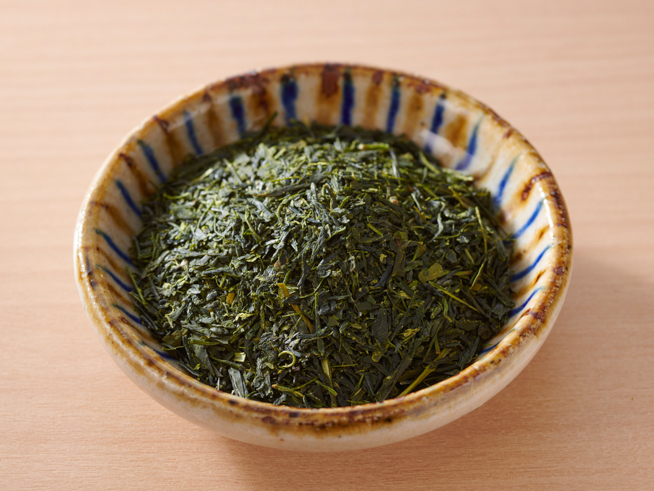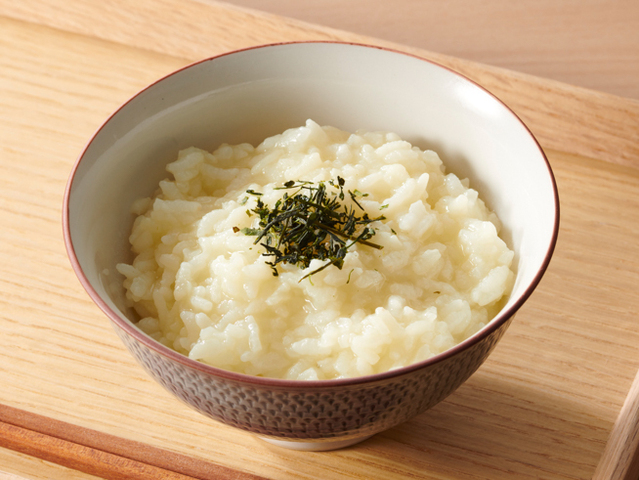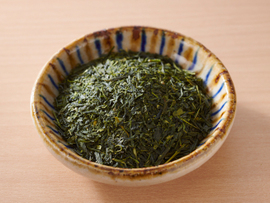
Nanbu-cha

YamanashiNanbu-cha
Classification (Large)
Others
Classification (Small)
Beverages
Main ingredients used
Nanbu-cha
When using downloaded images, please read the "Terms of Use" and clearly state that the source of the image is "Traditional Foods in Japan" by the Ministry of Agriculture, Forestry and Fisheries.
If the photo credits is stated, please include it as well.
Example of description
of the photo credits
Example of description when the photo credits is not stated
Source: "Traditional Foods in Japan" Ministry of Agriculture, Forestry and Fisheries
Example of description when the photo credits is stated
Source: "Traditional Foods in Japan" Ministry of Agriculture, Forestry and Fisheries
Photo credits:xxx
Region of inheritance
Nanbu Town
Product overview (special characteristics and types)
Nanbu-cha is a type of tea grown in Nanbu Town, the southernmost town of Yamanashi Prefecture, which enjoys the benefits of gentle sunshine and abundant water from the Fuji River basin. Nanbu-cha is also known by the name of Kai no Midori, a unified made-in-Yamanashi tea brand.
Located in Yamanashi Prefecture, where approx. 80% of the land is mountainous, Nanbu Town is at a low altitude of less than 150 m, is mild in climate, and has a lot of rain. This climate is said to have given birth to Nanbu-cha, which has sweet and mild umami and an elegant aroma.
Around 1955, Yabukita, a variety of tea that had just been registered, was introduced to the area. While the Yabukita tea of Shizuoka Prefecture, a tea-growing prefecture adjacent to Yamanashi, is deep-steamed, Nanbu-cha is comparatively lightly steamed. Thus, it has a plain taste and goes with various ingredients and dishes.
Nanbu-cha is available as tea leaves of various kinds such as green tea, roasted green tea stalks, and Japanese black tea as well as refreshing drinks that come in plastic bottles. Now we also see the premium Nanbu-cha "Kai no Kirameki," which is made by slow brewing at a low temperature only carefully selected first handpicked burgeons of tea with natural water from the Southern Alps.
History and culture
Because fog, the warm and pluvial climate, and other conditions around the Fuji River and its tributaries were suitable for tea production, tea had been grown mainly in the Kyonan region, which consists of Hayakawa Town, Fujikawa Town, Ichikawamisato Town, Minobu Town, and Nanbu Town, since long ago. A document by Anayama, the lord of Kawauchi during the Warring States Period, states that tea was used as a gift, suggesting that tea was already being grown during the Muromachi Period.
Tea growing started in earnest in Nanbu Town around 1955 upon the introduction of the Yabukita variety. From then until the period between the mid-1960s and mid-1970s, a number of tea processing factories were built and commercial tea production expanded. Around the end of the Showa Period and the start of the Heisei Period, the town’s tea-growing area exceeded 200 ha.
In 1973, Nanbu-cha was named Kai no Midori, a unified made-in-Yamanashi tea brand, by then Governor Tanabe, and it has become widely popular since.
Production method
Freshly picked tea leaves are steamed without applying pressure in order to prevent them from oxidizing. Next, they are kneaded and dried simultaneously through four kneading processes, namely soju kneading, junen kneading, chuju kneading, and seiju kneading. Performing these processes takes several hours. After undergoing these processes, the tea leaves are used as ingredients for green tea and other teas.
Picked tea leaves are processed into aracha or tea leaves that are not uniform in shape and size on the day that they are picked, and then they are sorted by part and processed further to make them uniform in size. After these processes, they finally become products.
Conservation and succession efforts
The roadside station Michi-no-eki Nanbu was opened in 2018 as a gourmet spot featuring Nanbu-cha. The restaurants serve various kinds of food made with Nanbu tea, such as Nanbu-cha soba noodles and parfaits using Nanbu-cha cream, and the shops sell their own products made with Nanbu-cha, such as puddings, doughnuts, cookies, and furikake (rice seasoning). They hold fairs and other events during extended holidays every year as well as develop and provide limited-time menus to promote Nanbu-cha.
Main consumption method
Pour boiled water into as many teacups as there are guests or pour it into a yuzamashi (water cooling jar) and leave to stand until it cools to approx. 60℃. Add a generous amount of tea leaves (two tablespoons for three people) in a teapot, and gently pour an appropriate amount of the cooled water for the guests. Wait for approx. 1 minute until the tea leaves slowly open up, and then pour every last drop of the tea into the teacups.
The used tea leaves may be eaten with ponzu sauce or soy sauce.
At-home recipes:Nanbu-cha rice porridge

Ingredients
Nanbu-cha
1 tablespoon
Water
700ml
Rice
1/2 cup
Salt
As needed
How to make
Wash the rice and drain in a colander. Put Nanbu-cha in a small bag for dashi broth soup.
Put the ingredients prepared in step 1 and water into a pot, put them over medium heat, and reduce the heat to low upon boiling. When the tea flavor and color adequately emerge, remove the bag.
Slowly boil the porridge with the lid on over low heat for 30 to 40 minutes while stirring as little as possible. Season with salt.
Serve the porridge with dishes.

